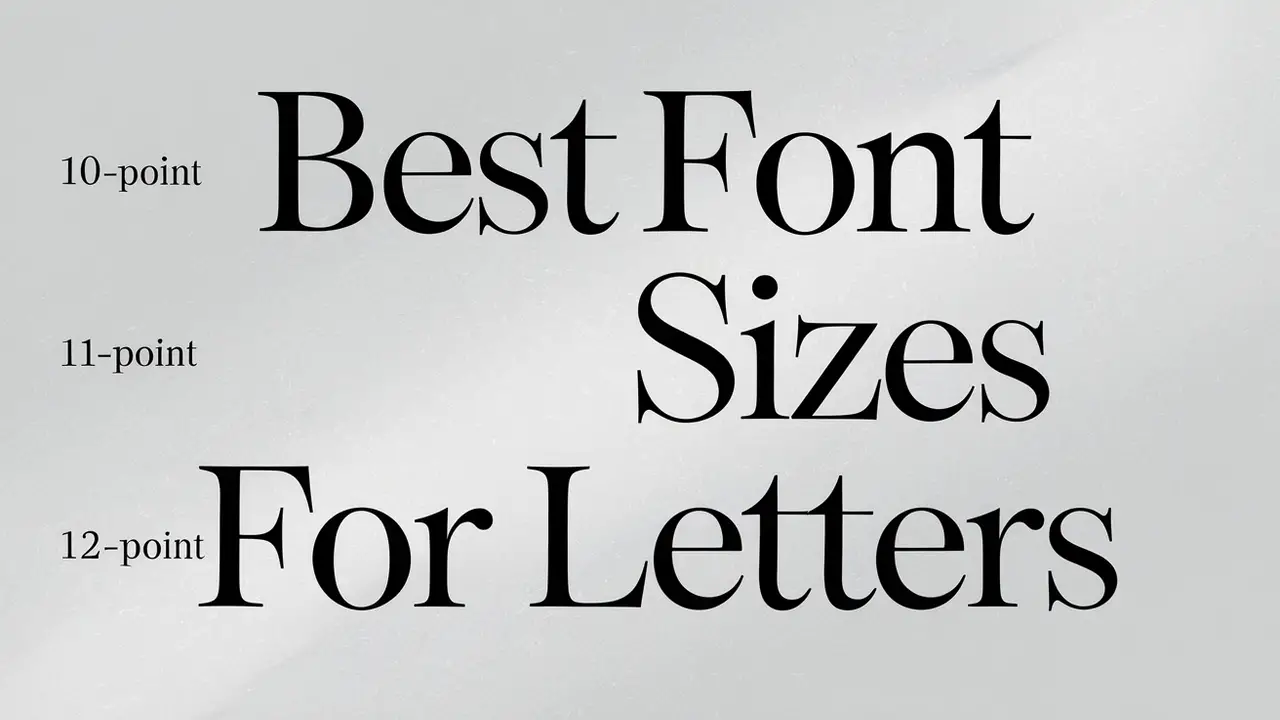When it comes to writing letters—whether they are personal notes, business correspondence, or formal invitations—the font size plays a crucial role in readability and presentation. Selecting the right font size for letters ensures readability and professionalism.
So, font choice and typography can significantly enhance your communication. This guide will help you navigate the various font sizes, styles, and considerations for creating effective letters.

Best Font Sizes For Letters
When it comes to font size, most professionals recommend using sizes between 10 point and 12 point font for the body text. Here’s a breakdown of different sizes and their applications:

10 Point:
Often used for lengthy documents where space is a concern. This size is suitable for more formal documents or when space is limited. It is commonly used in business letters.
11 Point:
A good balance for readability and fitting content onto a page. It’s the most widely accepted size for letters, providing a good balance between readability and space.
12 Point:
The most commonly used size for formal letters and documents. Larger sizes can be used for headings or special invitations but may be less formal for standard correspondence.
Using a smaller size may affect the readability of your text, making it difficult for recipients to engage with your letter. Therefore, the minimum font size for body text should generally be 10 point.
Formatting Tips For Letters
- Margins: Standard margins for letters are usually 1 inch on all sides. Ensure that your chosen font size fits well within these margins.
- Line Spacing: A 1.5 or double line spacing is generally recommended for letters to enhance readability.
- Alignment: Left alignment is most common for letters, as it provides a clean and organized appearance.
Best Fonts For Letters
Serif Fonts
Fonts like Times New Roman, Garamond, and Century Schoolbook provide a classic, formal appearance suitable for business letters and legal documents. Serif fonts have strokes at the ends of letters, which can enhance readability in printed materials.
Sans Serif Fonts
Fonts such as Arial and Calibri offer a modern look, making them excellent choices for emails and more casual correspondence. These fonts lack the extra strokes, which can make them easier to read on screens.
Choosing The Right Font Style
When selecting a font style, consider the tone of your letter. For a cover letter, it’s essential to choose a professional font that reflects your personality while maintaining formality. Fonts like Georgia or Cambria strike a balance between professional and approachable.
Along with font size, the style of the font matters significantly. Serif fonts (like Times New Roman) wors well for formal letters, while sans-serif fonts (like Arial) can be handy for more casual communication. When choosing a font, keep these factors in mind:
- Readability: Ensure that the font is easy to read at the chosen size.
- Appropriateness: Match the font style to the tone of your letter. For instance, a wedding invitation may benefit from a more decorative font, while a business letter should maintain professionalism.
Line Spacing And Readability
In addition to font size and typeface, proper line spacing can significantly impact the overall readability of your document. A line spacing of 1.15 to 1.5 is good to provide enough white space, making it easier for the reader to follow the text.
Capitalization And Typeface
When using uppercase letters, be mindful of their cap height compared to lowercase letters. Overusing uppercase can make text harder to read, so reserve it for headings or emphasis.
Final Thoughts
Your font choice can convey professionalism and clarity in your letters. This applies whether you opt for a serif typeface for formal documents or a sans serif font for casual emails. The best font size and style can help communicate your message effectively.
Selecting the appropriate font size and style for your letters is essential for ensuring clarity and professionalism. A 10 to 12 point font in a readable typeface, such as a serif or sans serif font, enhances your message’s effectiveness.
By maintaining proper line spacing and avoiding novelty fonts, you can create well-formatted documents that leave a positive impression on your readers. Ultimately, thoughtful typography can elevate your communication, making it more engaging and accessible.
FAQs
1.What Is The Standard Font Size For A Business Letter?
The standard font size for a business letter is typically between 10 and 12 point.
2.Can I Use Different Fonts In One Letter?
It’s best to stick to one or two complementary fonts to maintain a professional appearance.
3.What Is The Best Font For A Cover Letter?
Fonts like Garamond, Calibri, and Arial are often recommended for cover letters due to their readability.
4.Is There A Minimum Font Size For Legal Documents?
The minimum font size for legal documents is generally 10 point to ensure readability.
5.How Does Line Spacing Affect The Readability Of My Letter?
Proper line spacing (1.15 to 1.5) improves readability by providing sufficient white space between lines of text.
6.What Are Some Common Serif Fonts?
Common serif fonts include Times New Roman, Georgia, and Century Schoolbook.
